Entries tagged with “concrete”.
Did you find what you wanted?
Wed 14 Aug 2013
I was visiting a friend and in their neighborhood all of the curbs were cut for driveways (they were not poured for the cutouts). 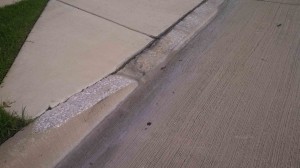
This might have saved some time for the carpenters forming & pouring the concrete. But it created additional work for the concrete cutters and the finishing of the driveways.
This lack of pre-planning created:
- additional time to cut the curb,
- dust (and silica, for sure),
- the use of additional water (hopefully) to control the dust,
- respirators (& cartridge filters),
- exposure to noise, dust, silica
I don’t know the circumstances why this occurred, but I wonder if the person planning the development thought of the exposures to other human beings?
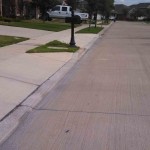
ps. Sorry for my blogging absence. Have been on vacation! (for some of it)
Fri 1 Mar 2013
Posted by admin under Carcinogen, Exposure, Silica
Comments Off on Silica during chipping hammer
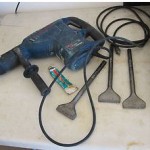 Yes, there can be airborne silica in the concrete when you are chipping up motar & tiles from a concrete base. This week a friend told me about his neighbor. He is a self-employed tile setter. He has worked in the industry for 20+ years. They just discovered he has cancer and will have the upper portion of his lungs removed.
Yes, there can be airborne silica in the concrete when you are chipping up motar & tiles from a concrete base. This week a friend told me about his neighbor. He is a self-employed tile setter. He has worked in the industry for 20+ years. They just discovered he has cancer and will have the upper portion of his lungs removed.
Go here for more information. NPR article on silica rule delay.
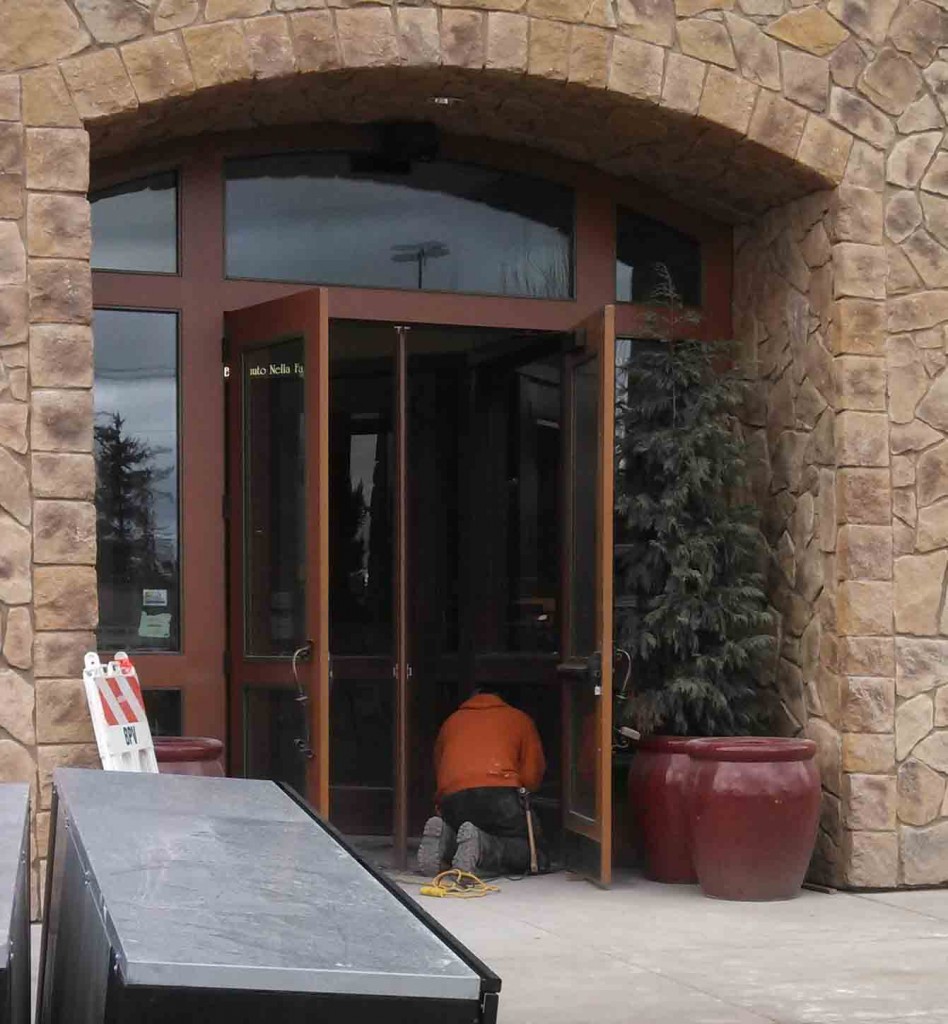
Wed 12 Dec 2012
Posted by admin under Air Monitoring, Behavior Based, Concrete, Dust, Engineering Controls, Exposure, Hazard Communication, HEPA, Management, Personal Protective Equip (PPE), Respirators, Safety Policies, Safety Programs, Silica, Training
Comments Off on Pre task planning – for silica
Controlling most of these types of exposures is really simple. If you know the job- and you know it will generate airborne silica = Pre Task Plan!
I wish Superintendents would enforce their project managers, or project engineers, to make a pre-task plan for every concrete/silica producing task. Then, (please don’t stop yet), review the plan once the project starts!
Below are two examples with different outcomes: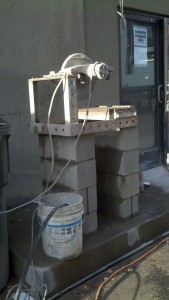
1. Cutting concrete block.
The pretask plan called for a garden hose with attachment(s) to wet the cutting area. Everything was perfect until the water was shut off. But, they improvised and found an electric water pump with bucket and recycled the water. It was a great outcome. What if the power went out? They could have used a Hudson sprayer.
2. Grinding plaster off a brick wall.
They built an enclosure and containment. They had a negative air machine with HEPA filters. They had a vacuum with HEPA filters, tyvek, 1/2 face respirator, eye protection, etc. But, as they worked the vacuum couldn’t keep up with the amount of dust generated by the 7 inch Bosch grinder. It was really dusty. They worked like this for days. No one onsite saw them because they were in containment. Unfortunately the project is almost over and it could have been better. A simple shroud to the grinder, like this one (no endorcement) might have controlled the dust & silica. Sure, it might have been troublesome to find the exact one, and get a vacuum attachment, and have the extra weight, and ….
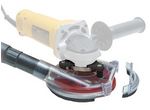
So, let’s talk to people about silica, talk about solutions, and then check to see if they’re effective.
Tue 26 Jun 2012
‘Tis the season for silica (here, and here too).
I had four observations about this picture,
- paper dust masks are totally inadequate for this task, and
- why isn’t there any engineering controls (water?, vacuum?), and
- why is the observer standing in the dust plume?, and
- what does the employees do with their clothes after work?
Please be safe out there.
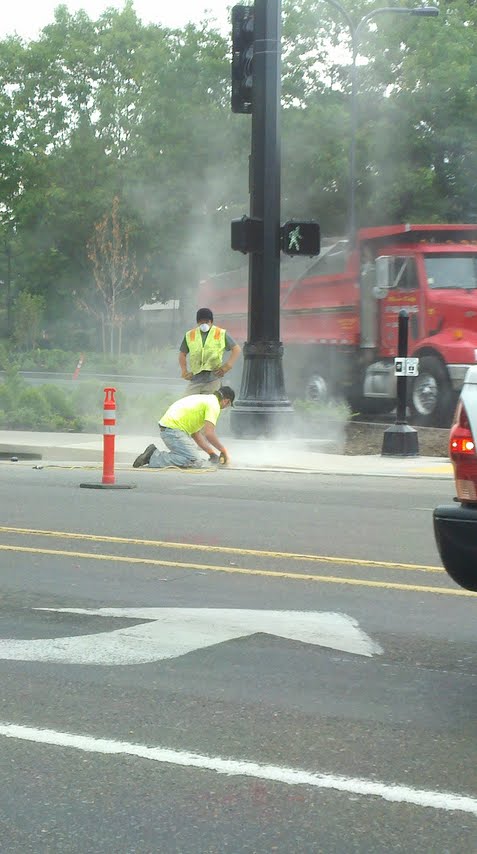
Fri 1 Jun 2012
I had posted a few weeks ago about a recent sighting of silica exposures during concrete/asphalt cutting. Then, today, at a stoplight…there it is.
A worker was using a gas powered hot saw (cut off saw) with an abrasive blade to cut a concrete pipe. No respirator.
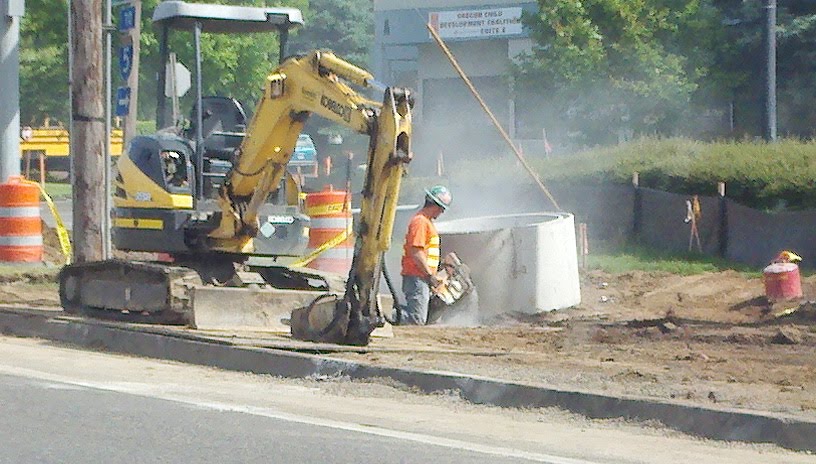
If you were me, what would you do? (Leave your answer in the comments section)
- call the company main office?
- stop and caution the employee?
- call OSHA?
- take a picture and post it for the world to see (check…ha)
- offer to buy a respirator
- perform air monitoring for them? (for free, of course.?)
Thu 10 May 2012
In  the trainings I perform for employers, I try to explain to them that there IS overexposure to silica on their jobsite. I tell them that if I could be at their site everyday, and be ready to perform air monitoring at a moments notice, I could find overexposures.
Here is an example of a road crew cutting asphalt with a concrete saw. I’m sure it was a small cut (since they were not a concrete cutting subcontractor, and it was a tiny little saw). But the haze you see is the dust plume from the cutting.
I just happened to drive by and be stopped at a red light when this occurred. I know, I probably shouldn’t have touched my phone (while in my car) to take a picture…but I couldn’t resist. And, with that same train of thought, the road construction crew probably thought, “it’s just a small cut and it will only take 5 minutes”. So, neither of us are innocent
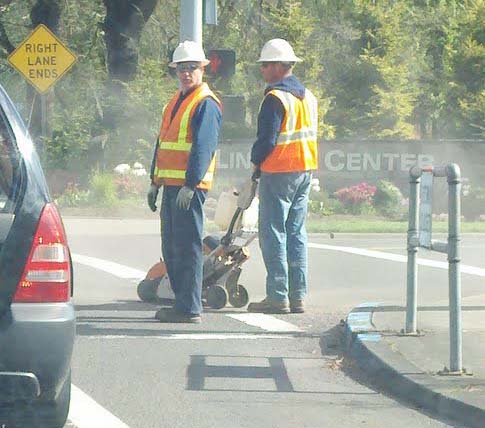 .
.
Thu 16 Feb 2012
For employees (carpenter, laborer, iron worker, plumber, electrician) using powder actuated tools, please take caution! There are possible airborne lead exposures during powder actuated tool use.
The best safety practice is to eliminate the hazard. In this case there are two easy alternatives;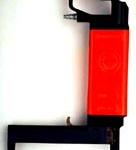
- using lead-free loads, or
- using a pneumatic type nailer (like this one made by Pneutek, Hilti makes a CO2 type as well)
However, if you are an employee, I realize there are times that you are not given a choice. If this is the case, please consider:
- asking for the MSDS for the primer loads (look for lead styphnate, or similar)
- lead exposure can occur by inhalation and by ingestion (wash!)
- wash & be diligent around eating & what you “take home” to your family
- lead exposure to children is serious (they absorb lead better & it causes more detrimental health effects)
- respirators might be required when using these tools (so wear one!)
- working overhead (nailing into ceiling) might have higher airborne levels than other positions
- bringing up these concerns with your safety professional onsite
- performing air monitoring to determine airborne levels (although for the price of an industrial hygiene consultant, you could own a CO2 actuated tool)
- reading more about it from my earlier post here.
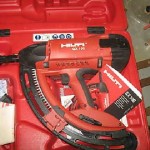
Tags: carpenters, concrete, drywall, electrician, framers, hilti, iron workers, laborer, Pb, plumber, steel stud framing










